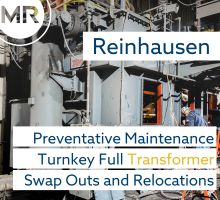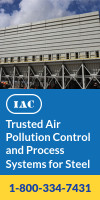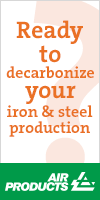IEEFA: Oman a Frontrunner in the Green Steel Transition
11/13/2025 - A report from the Institute for Energy Economics and Financial Analysis (IEEFA) suggests Oman is on pace to become a global leader in the green iron and steel industry.
The author of the report, Soroush Basirat, said Oman is capitalizing on the green steel transition and establishing itself as a leading international hub. The report, Oman at the frontline of the green steel transition, evaluates the industrial landscape in Oman as decarbonization efforts within the iron- and steelmaking industry increase.
“Oman is one of the few nations in the Middle East and North Africa (MENA) region with an integrated steelmaking supply chain,” Basirat said.
Oman’s iron and steel supply chain includes iron ore concentration, pelletizing, direct reduction and electric arc furnace (EAF) facilities. They have expansion plans for domestic iron ore concentration.
“Having this established industrial base gives it a solid foundation for transitioning towards low-emission iron and steel production – and ultimately green iron and steel,” said Basirat.
The industrial base produces iron metallics including direct reduced iron (DRI), which can currently be produced using fossil gas. For the country to produce green iron and steel with its DRI facilities, it needs to move from gas to green hydrogen, the IEEFA said.
Oman has strong renewable energy potential, excess land for project development, supportive regulations such as the Oman Vision 2050 and is working on various hydrogen projects.
“With the potential to supply green iron to markets such as the EU cost-competitively, the country holds a significant advantage over other producers. And it is well positioned to lead the shift to green iron and steel as it is managing the transition in a highly structured way,” Basirat continued.
Several new companies within the country including Meranti Green Steel, Mitsui, Kobe Steel and ACME Group are contributing to a new generation of DRI facilities. They are expected to use a mix of gas and hydrogen from their inception; they intend to increase the amount of hydrogen used over time.
“Oman is one of the few nations in the Middle East and North Africa (MENA) region with an integrated steelmaking supply chain,” Basirat said.
Oman’s iron and steel supply chain includes iron ore concentration, pelletizing, direct reduction and electric arc furnace (EAF) facilities. They have expansion plans for domestic iron ore concentration.
“Having this established industrial base gives it a solid foundation for transitioning towards low-emission iron and steel production – and ultimately green iron and steel,” said Basirat.
The industrial base produces iron metallics including direct reduced iron (DRI), which can currently be produced using fossil gas. For the country to produce green iron and steel with its DRI facilities, it needs to move from gas to green hydrogen, the IEEFA said.
Oman has strong renewable energy potential, excess land for project development, supportive regulations such as the Oman Vision 2050 and is working on various hydrogen projects.
“With the potential to supply green iron to markets such as the EU cost-competitively, the country holds a significant advantage over other producers. And it is well positioned to lead the shift to green iron and steel as it is managing the transition in a highly structured way,” Basirat continued.
Several new companies within the country including Meranti Green Steel, Mitsui, Kobe Steel and ACME Group are contributing to a new generation of DRI facilities. They are expected to use a mix of gas and hydrogen from their inception; they intend to increase the amount of hydrogen used over time.



.jpg?lang=en-US&ext=.jpg)
.gif?width=220&height=200&mediaprotectionhash=374c6b9a31f2b2fbfc7937391034efb46fd57feba997b9ad2ae9a0bd3d48329d&ext=.gif)

.gif?width=100&height=200&mediaprotectionhash=e2d5b15d68f84f22038524be6c58e5268d67b7f44494b544e29a8d53c5b959ba&ext=.gif)


